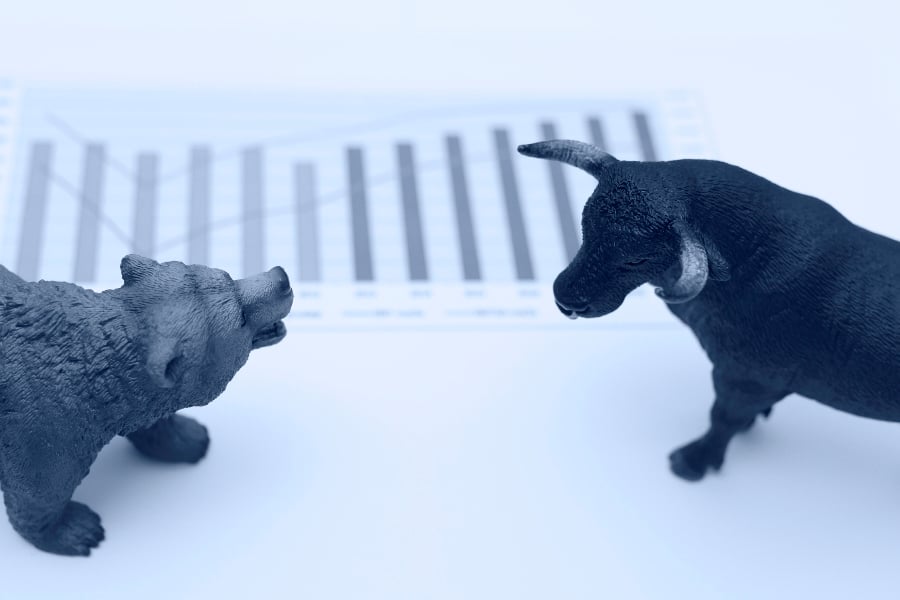Forecasts are calling for the S&P 500 to rise 5.8% by year-end, the most optimistic call since 2011.
U.S. stock strategists are showing uncommon fortitude even as Greece threatens to splinter Europe, the Federal Reserve moves toward raising rates and China's market enters a correction.
They're sticking to forecasts for the Standard & Poor's 500 Index to rise 5.8% by year-end, the most optimistic call since 2011, data compiled by Bloomberg show. Based on how closely the targets are grouped, they're more confident now than any time since the financial crisis.
Amid the second-longest U.S. rally since 1950, strategists remain staunchly bullish, saying the economy is too strong for the advance to end now. Turmoil in bonds is leaving stocks as the only alternative even as valuations in equities climb further above historical averages.
“People are going to turn more to equities,” said John Stoltzfus, the New York-based chief market strategist at Oppenheimer & Co. who thinks the S&P 500 will end this year 9.5% above last week's closing level. “Individuals are still testing the water and we think that stocks still have further to run.”
About $10.8 billion was sent to global equity funds and $10.3 billion was pulled from bonds in the week ended June 17, data compiled by Bank of America Corp. showed. Between January and April, more than $45 billion was withdrawn from funds tracking U.S. stocks, according to data compiled by Bloomberg and the Investment Company Institute.
UNFAZED STRATEGISTS
Even as money seeped out, professional forecasters have held firm, with the average estimate falling one point since January, according to 21 firms surveyed by Bloomberg.
Strategists have been unfazed by oil's plunge, stagnating profits and the widest swings in fixed-income and currency markets since the 2013 taper tantrum. Greece's impasse with creditors and the sharpest weekly retreat in Chinese equities in seven years also failed to register.
Among strategists, Barry Bannister of Stifel Nicolaus & Co. and Weeden & Co.'s Michael Purves are tied for most optimistic, with both saying the S&P 500 will jump 11% to 2,350. According to Mr. Bannister, a Fed rate increase will eliminate uncertainty and encourage equity investors rather than scare them because the global economy continues to improve.
“Foreign growth is going from being very bad to less bad,” Mr. Bannister said. “I'm optimistic the worst is behind us and that's why we're still positive.
"As such, we don't think the market will peak for at least a year,” he said.
Wall Street's top stock forecasters have held to bullish predictions throughout 2015 — even as momentum in the S&P 500 has ground to a halt. At 12%, the difference between the highest and lowest prediction is the narrowest since at least 2009, data compiled by Bloomberg show.
WIDER LENS
The S&P 500 has room to rise before reaching its historic trend in past market peaks over the last eight decades. At 2,109.99, the index is 51% above its 10-year moving average, data compiled by Bloomberg show. That compares with a 64% premium at the end of the last 12 bull markets.
Even though it's up more than 210% since 2009, annual returns in the S&P 500 are just now getting back to the historical averages when viewed from a wider lens. They're a little under 10% when measured from starting points 10, 20 or 25 years ago, data compiled by Bloomberg show.
This is the stage of the economic cycle when returns exceed averages, said Canaccord Genuity Securities' Tony Dwyer. He sees the S&P 500 rising 11% to 2,340 at year-end.
“You're going to have a double-digit gain again this year,” said Mr. Dwyer, an equity strategist at Canaccord in New York. Stocks won't “go back to the more traditional 7% average annualized kind of growth,” he said. “We're expecting a bit of a valuation expansion on top of some mid-single digit earnings growth.”
Some forecasters think swelling valuations will keep U.S. stocks from going any higher. The S&P 500 will rise to 2,150 by mid-year before fading to 2,100 by the end of 2015 and buybacks and dividends will account for the market's entire return, according to Goldman Sachs Group Inc.'s David Kostin.
LEARNING LESSONS
The broader-market index was trading at 18.2 times earnings last month, putting it in the 99th percentile of historical valuations, he wrote in a May 15 note to clients. Mr. Kostin and Barclays PLC's Jonathan Glionna are tied as the least bullish strategists Bloomberg surveys.
This year's bullishness may reflect lessons from the last two, when strategists underestimated gains. The mean target was 1,955 at the start of 2014, a year the S&P 500 ended at 2,058.9, and 1,534 in 2013, when the index soared to 1,848.36.
RBC Capital Markets' Jonathan Golub cites continued earnings growth as the main reason why the market will grind higher to end the year at 2,325. Profit for S&P 500 companies excluding energy is projected to grow 7.7% this year, based on analysts' estimates compiled by Bloomberg.
“Markets go higher when economies naturally grow over time,” said Mr. Golub, chief market strategist at RBC. “Earnings naturally go up because gross domestic product goes up and because people have babies and companies innovate.
"The normal state of affairs is for earnings to move higher,” he said.
Mr. Stoltzfus likes to remind clients that the broader-market index lost all its gains for 2014 in October, dragged down by a 9.8% plunge, before powering to an 11% gain for the year in the last two months.
“We've got to consider that the market's really reflecting what's going on,” he said. “It's that push-to-shove kind of situation that you see when you're in transition. We think as we keep going into this year, just as last year, the market will recognize further growth.”







